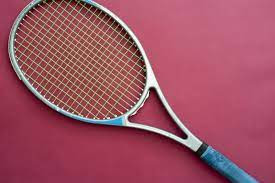Tennis boasts a rich and storied history spanning centuries, captivating millions worldwide with its elegance and intense competition. Embark on an enthralling exploration as we delve into the extraordinary journey of this sport, tracing its origins through time, examining the evolution of its equipment, and illuminating the various rule modifications that have shaped it. Join us in uncovering the fascinating tale behind tennis' remarkable development.
The Ancient Origins of Tennis
The history and origins of tennis are best understood by exploring its roots back to ancient civilizations. It is necessary to delve into the dawn of civilization, where early variations of the game first took shape. Tennis's evolution is intricately intertwined with numerous ancient cultures.
1. Ancient Egypt and Greece
Ancient Egypt boasted a game named "paume," where players relied solely on their bare hands to hit a ball across a net. Meanwhile, the Greeks celebrated their own rendition called "sphairistikè" which involved using the palm to strike the ball. These early versions laid the foundation for modern tennis as we know it today.
2. France: The Birthplace of Tennis
In 12th century France, a significant moment unfolded in the history of tennis. It was during this time that the game, initially known as "jeu de paume" or the "game of the palm," began to take form. The transition from using hands to wielding rackets forever transformed the sport's trajectory. Additionally, the introduction of indoor courts with walls contributed to its growing popularity and set the stage for further evolution.
The Evolution of Tennis Equipment
The evolution of tennis equipment closely mirrored the transformation of the game itself. Let's delve into a comprehensive exploration of how tennis equipment has evolved throughout the years.
1. The Transition to Rackets
In the history of tennis, there was a significant shift from using hands to employing rackets, which proved to be a game-changing innovation. With rackets, players gained better control and could hit the ball with increased force. Furthermore, advancements in racket manufacturing led to the replacement of traditional materials like wood with more durable options such as graphite and titanium. These new materials not only enhanced performance but also ensured better longevity for tennis rackets.
2. The Tennis Ball
Tennis balls have undergone significant transformations throughout history. In the early days, they were created using leather and filled with a variety of materials. However, in today's game, tennis balls are carefully designed to provide consistent bounce and optimal playability across different surfaces. They now consist of a rubber core wrapped in felt, ensuring precision and reliability during matches.
Rule Variations Across the Globe
The global popularity of tennis has given rise to a fascinating array of rule adaptations and variations across different regions and cultures. These unique spins on the game have resulted in intriguing manifestations, including:
1. Lawn Tennis
The modern form of tennis, played on meticulously maintained grass courts, gained prominence in England. This variation ultimately led to the establishment of renowned tournaments like Wimbledon, celebrated for its vibrant green lawns and unwavering commitment to traditional regulations.
2. Hard Court and Clay Court Tennis
The game's dynamics transformed with the introduction of hard court and clay court surfaces. Players were required to adapt their playing styles based on the type of court, resulting in a broader range of strategies and diverse playing experiences.
3. Table Tennis
Table tennis, a derivative of lawn tennis, made its transition to an indoor table format. It quickly captured the hearts of millions worldwide as a popular recreational sport and eventually secured its place as an Olympic event.
In conclusion, the evolution of tennis throughout history is a captivating journey filled with intriguing developments. This global sport has witnessed significant changes in its equipment and regulations, tracing back to its modest origins in ancient Egypt and Greece. Whether you are an experienced player or a passionate observer, delving deeper into the sport's progression will enhance your appreciation for it. Therefore, bear in mind the decades of rich history and remarkable innovation that have coalesced to shape tennis into the incredible sensation it is today. So next time you pick up a racket or witness a match unfold, let these profound roots and accomplishments amplify your enjoyment.
FAQ's
When and where did the first recorded game of tennis take place?
In 12th-century France, the first recorded game of tennis unfolded. It was referred to as "jeu de paume" or the "game of the palm." Within indoor courts featuring walls, players utilized their hands to strike the ball over a net.
How did tennis rackets evolve from the early days of the sport?
Tennis rackets have undergone significant advancements since the inception of the sport. Initially crafted from wood, they have progressively transitioned to modern materials such as graphite and titanium. This evolution has led to enhanced control and increased power for players in contemporary times.
What were the earliest tennis balls made of, and how have they changed over time?
Early tennis balls were traditionally crafted using leather and filled with various materials like wool. In contrast, modern tennis balls are designed with a rubber core covered in felt to ensure consistent bounce and optimal playability.
What are the key differences between lawn tennis, hard court tennis, and clay court tennis?
Lawn tennis, a sport played on grass courts, is renowned for its adherence to traditional rules and prestigious tournaments like Wimbledon. In contrast, hard court and clay court tennis are played on distinct surfaces, each demanding players to adapt their playing styles accordingly.
Did tennis originate in France, or were there other regions where similar games were played?
Tennis, a sport strongly associated with France today, has its roots dating back to ancient Egypt and Greece where similar handball-style games were played. This fascinating history highlights the diverse origins of the sport.














0 Comments